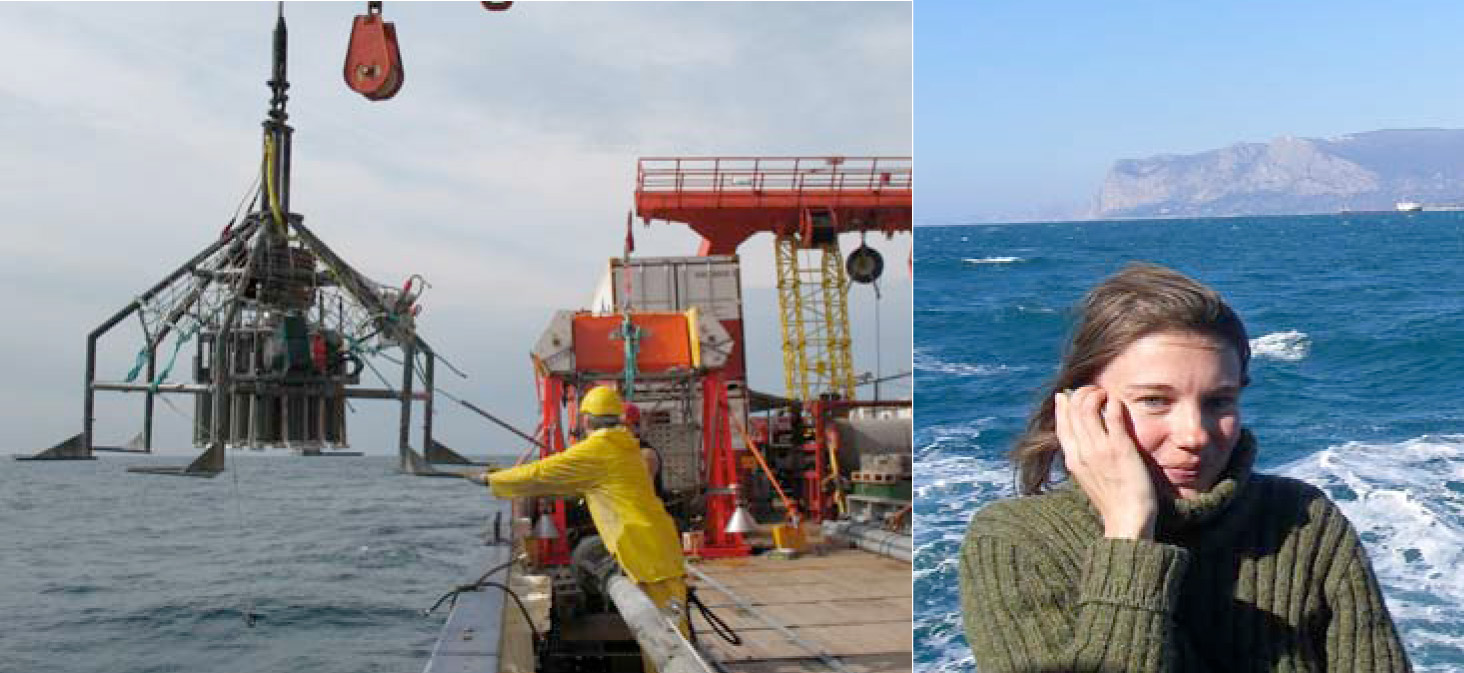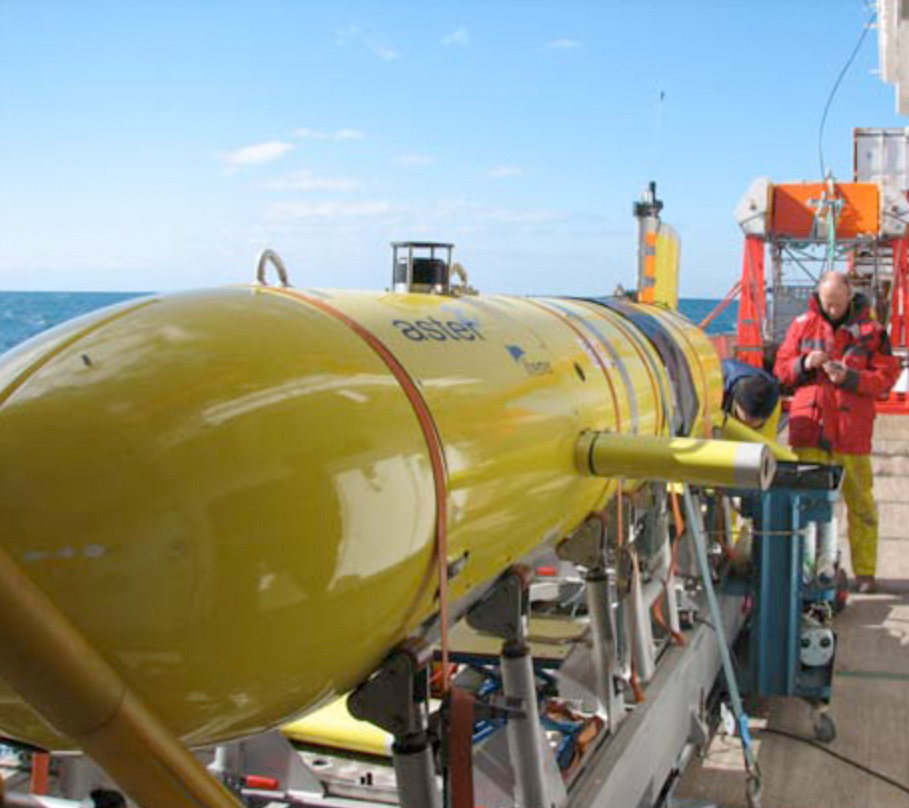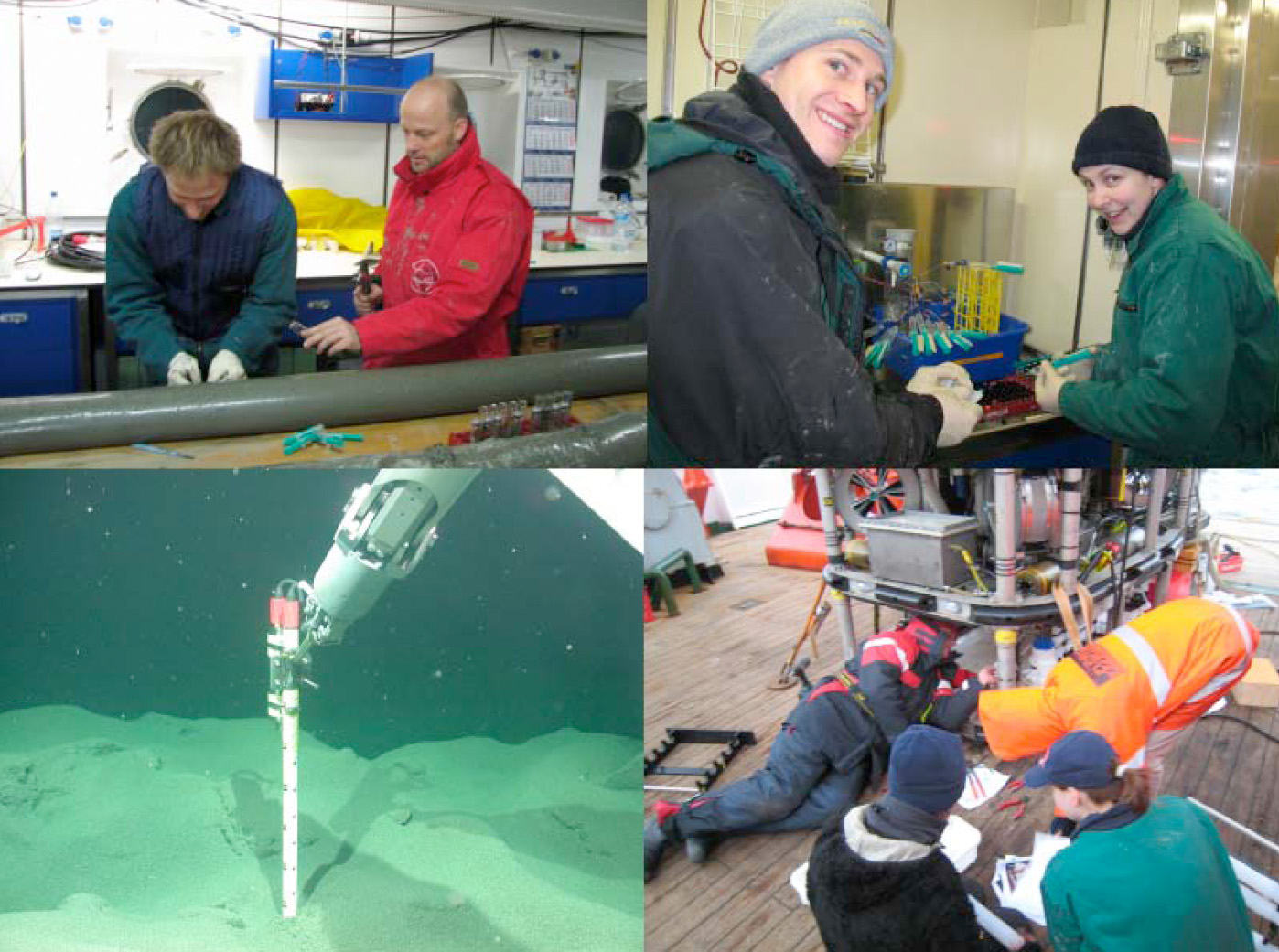Page path:
- Press Office
- Press releases 2007
- On board of Research Vessel Meteor in the Black...
On board of Research Vessel Meteor in the Black Sea
In the focus of the study proposed here are in situ measurements of fluxes and turnover of methane and sulfur at seep systems of the Black Sea, as well as an investigation of the microbial diversity and function in a permanently anoxic setting, especially that associated with fluid flow and gas seepage.In the Northern Black Sea, a large variety of active methane seeps have been identified at depths from 100-3000 m, including actively gas emitting mud volcanoes, and unique microbial reefs. The main objectives of MICROHAB are to map specific microbial habitats at high resolution, to quantify the composition, distribution and development of microbial communities in the permanently anoxic Black Sea, to and to obtain insight in element cycling and export at different types of fluid seeps in the Black Sea.
The expedition “MICROHAB”contributes to the GEOTECHNOLOGIEN program “Methane in the Geo-Bio-System” MUMM II by studying the microbiology and biogeochemistry of methane and sulfur turnover by in situ technologies, as well as to Work Package“Anoxic microbial habitats” of the EU FP6 Integrated Project HERMES which deals with the biodiversity of hotspot ecosystems at Europe’s continental margins. We left the harbor of Istanbul in the morning of the 23 February. Not even the relatively dense fog was able to hide the beauty of the Bosporus coastline. Unfortunately the Black Sea waited for us with strong winds and high waves so that the 28 new scientists on board chose a light dinner and earlyrest. We arrived at the first site, the gas seeps at the North-Western slope of the Crimea Peninsula in the evening of the 24 February. After spring-time temperatures in Istanbul, we had to accustom to -5°C outside. Due to technical problems with the ROV QUEST we started instead with a series of TV-guided multicorers across the oxic-anoxic boundary from 120 m water depth down to 170 m for our new partner in HERMES, the Ukrainian Institute of Biology of the Southern Seas (IBSS). Katya Ivanova from the Benthos Ecology Department looks for changes in the fauna with regard to oxygen availability. On the 25 February the weather improved considerably and we planned the first dive of the AUV AsterX (Ifremer) carrying the multibeam echosounder Simrad EM2000 (GeoAzur) above the gas seeps in 150-300 m water depth on the slope of the Crimea peninsula. The aim was to map the famous carbonate reefs formed by methanotrophic microorganisms in this region. Unfortunately it was discovered that the AUV has severe technical problems, and our Ifremer team on board is working hard on solutions ever since. Instead we worked with the ship based Kongsberg EM 710 Multibeam to prepare the first ROV dive to the microbial reefs. The task was to do video-mosaicking and sampling of the METROL and GHOSTDABS fields which were the targets of many previous investigations of the microbial reefs focusing on their organic and inorganic geochemistry and geobiology. Due to the technical problems with ROV QUEST (MARUM) the video-mosaicking was canceled, but we obtained very interesting push cores from between a chimney field showing various forms of subsurface mats and microbial biofilms, and quite gassy sediments. We continued to the Sorokin Trough NE of Crimea on the 26 February.
This area is known for its many active mud volcanoes, which have been previously studied by the TTR program (IOC/UNESCO) and during METEOR expedition M52 “Margasch”. We had planned to focus on the Dvurechenskii mud volcano (DMV), a flat-topped and very active mud volcano in the Sorokin Trough. The 27 and 28 February we spent mapping the mud volcano with the EM120 to plan the dives, and with deployment of gravity corers equipped with in situ temperature probes. As part of the HERMES program, Tom Feseker of IFREMER/AWI is studying the in situ temperatures of the surface and subsurface muds in relation to the morphology and chemistry of the mud volcano for a better idea of the fluid flow and its causes and effects. We have discovered a small elevation in the NE center of the mud volcano where relatively fresh mud flows are visible and free gas is escaping when the seafloor is touched by the ROV or our instruments. Tom was able to confirm that this is the warmest spoon the DMV by gravity coring. The ring marks the gassy mound, which we are currently sampling. Between 1 and 4 March we have mainly concentrated on TV MUC and gravity core sampling of the center and Northern and Southern rim of the DMV. We are analyzing the biogeochemical signatures of various microbial and geochemical processes in sediments connected to methane turnover within and outside of the mud volcano. Thanks to the hard work of the ROV QUEST technical team on board, the deep-water robot QUEST of MARUM is currently diving to deploy the microsensor profiler measuring sulfide fluxes and pH profiles together with the temperature probe system along a transect from the active center to the outside of DMV. Despite the many technical problems we are making good progress with the work and have a good time on board supported by the excellent captain and crew of METEOR.
With our best greetings to families, friends and colleagues on land – the MICROHAB team.
With our best greetings to families, friends and colleagues on land – the MICROHAB team.
Fig.1 TV-MUC sampling on the NW-slope of the Crimea peninsula. Right: Katya Ivanova of IBSS
Fig. 2 The AUV AsterX being tested by Laurent Artzner and Lorenzo Brignone
Fig. 3 Pushcoring at Crimean seeps. Left: subsurface mat in a push core. Right: happy scientists Alexey Kamyshny and Laura Wehrmann with their prey.

Fig. 4 Dvurechenski mud volcano.
Fig. 5 Work on board METEOR. Upper panel: Tobias Mohr, Thomas Holler and Florence Schubotz sampling subsurface sediments for analyses of methane turnover. Lower panel: The temperature probe in action; QUEST being prepared for a dive.




